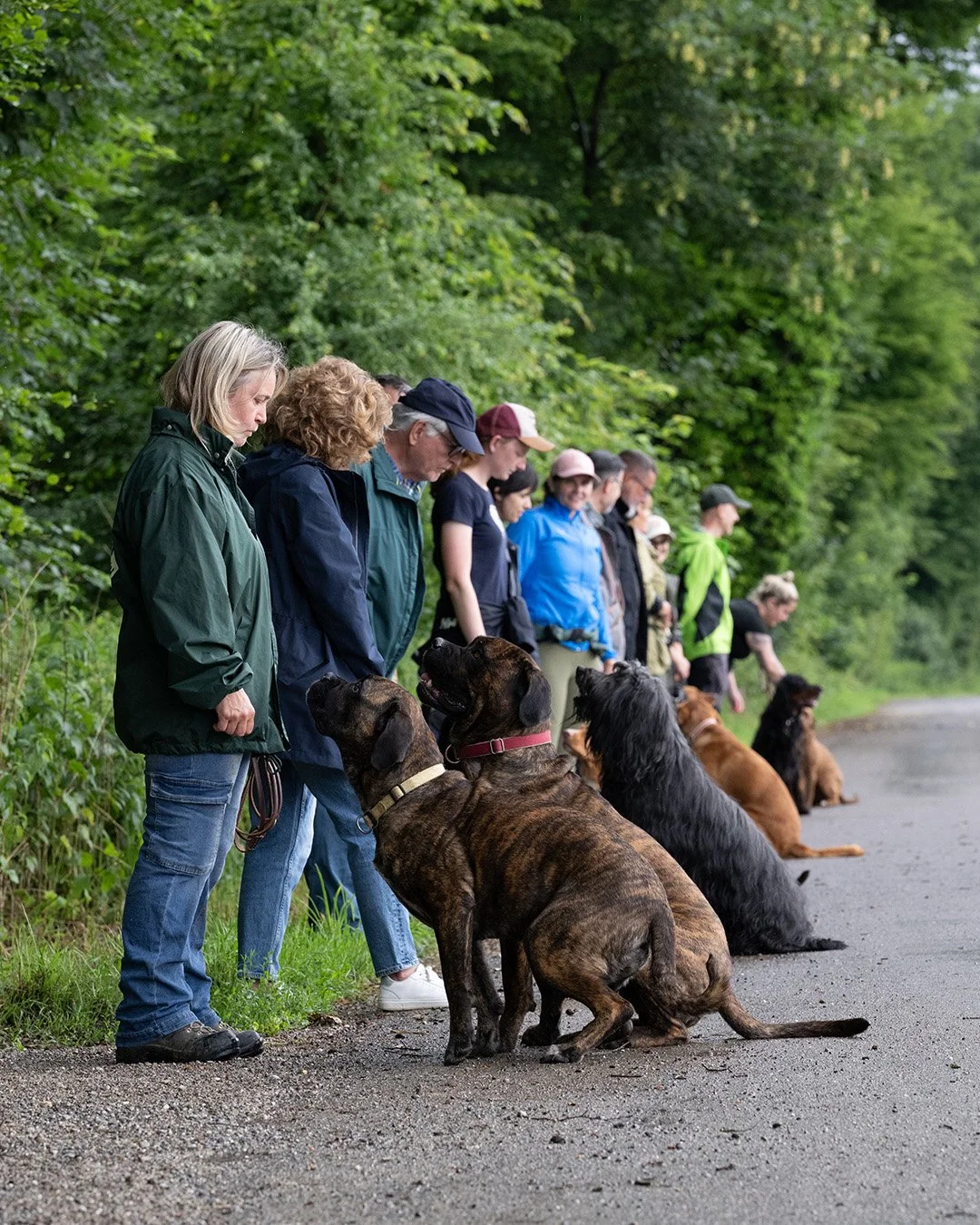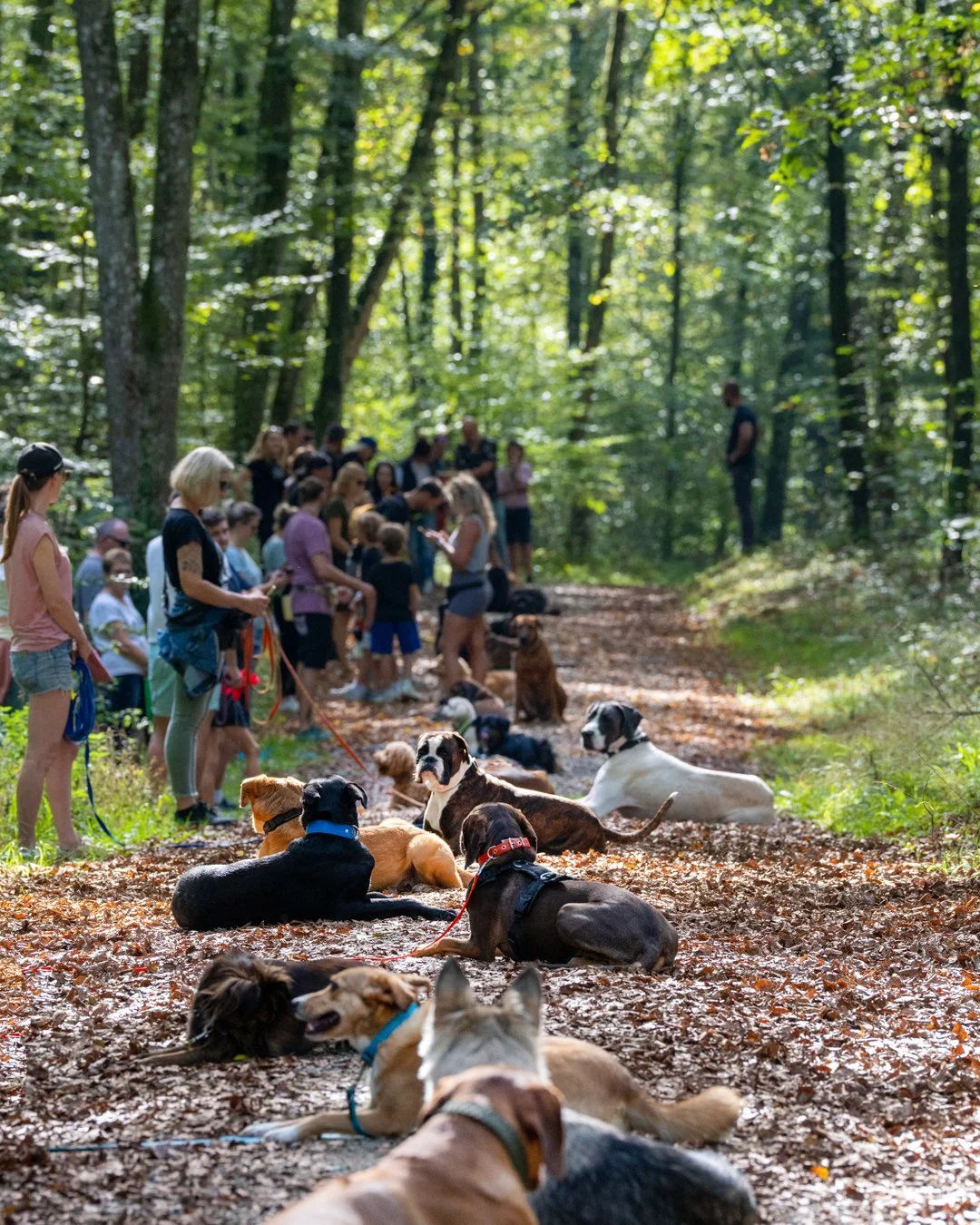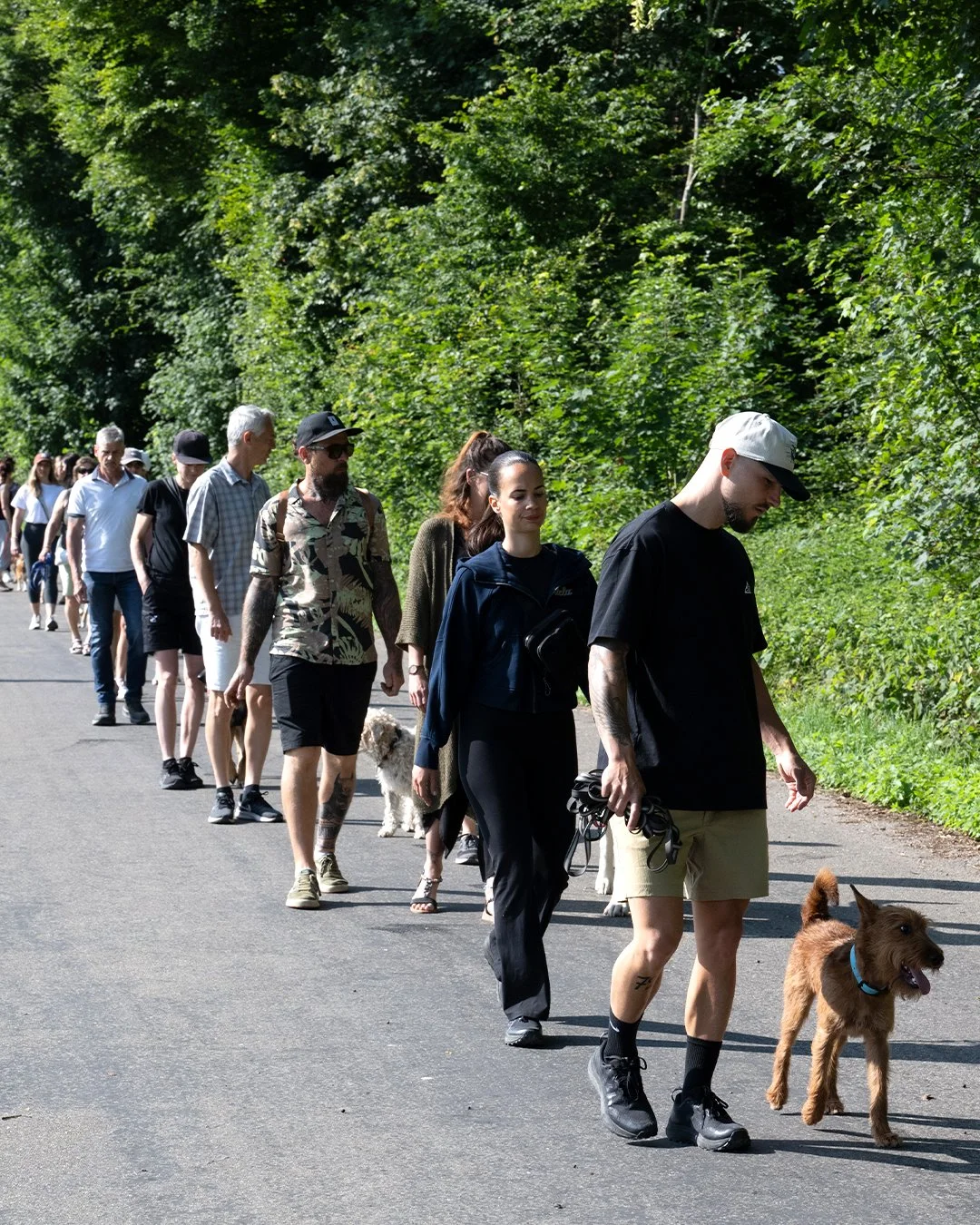Training concept
The coaching
Truly effective coaching starts with an honest assessment, a clear definition of goals, a logical strategy and a practical, actionable plan. Using all modern and useful coaching tools and resources, together we will get the most out of you and your dog. Efficient, targeted and sustainable. This is exactly what characterizes my work.
My aim is to give you the practical and theoretical knowledge you need to work with your dog safely, clearly and successfully. If you make progress and enjoy your dog's development, then that is also my greatest success. My passion is to accompany you on your journey and give you the best possible tools to achieve your goals and build a positive, reliable bond with your dog.
Your success is what drives me - and I am delighted to be part of your success story.












Without lining
A central pillar of my training approach is that I work without food or other conditioning methods.
In certain areas, such as with police, customs or assistance dogs, the use of food or toys makes perfect sense in order to train specific skills in a targeted manner. But here we are talking about clearly defined tasks - not the everyday life of a family dog.
The mistake many owners make is to confuse the police dog with the everyday dog. Both are valuable, but their objectives are fundamentally different. Above all, an everyday dog should be reliable, socially integrated and go through life calmly.
A relationship based on understanding, clarity and mutual acceptance leads to trust, reliability and genuine bonding in the long term. Those who rely exclusively on rewards and food stimuli do not build a genuine relationship, but risk dependent behavior that often fails in everyday life.
My goal is a relationship that works from the inside - not one that only works when the treat is in your hand.
Example
I would like to give you a simple example that shows why dependence on food or toys as a training strategy has its limits when it comes to your dog's reliability.
Imagine that food or toys can be ranked on a scale from 1 to 10. The average is around 7, which is the stimulus your dog feels when you offer him a reward.
Now imagine you meet a cat outside. If your dog's motivation is based solely on food, he will not come back to you at that moment because the stronger stimulus wins.
Reliability does not come from the food, but from your leadership, clarity and competence as an owner. That's why it's crucial to work on your own skills and understand where the flaws in the system lie.
A genuine, inner bond is not created by the hand holding the treat. It comes from the person who radiates trust and security.
Educate sensibly
It is crucial that you understand the difference between violence and reasonable strictness. Violence, i.e. the deliberate infliction of pain or fear, has absolutely no place in dog training. It destroys trust, creates insecurity and never leads to genuine reliability.
Being reasonably strict, on the other hand, is a key part of healthy parenting. It means being able to say no, knowing what you want and what you don't want, and setting clear, fair boundaries when necessary.
Your dog needs direction. He doesn't feel comfortable if he can do whatever he wants, because then he has responsibilities that he can't bear.
If a dog is not led clearly and sensibly, behavioral problems, stress and disorientation often arise. A dog can only be calm, balanced and reliable if it can rely on its caregiver - someone who leads with clarity, consistency and fairness.
Customer videos: Real results
Real results
"The cornerstones of my training are clear and understandable communication, commitment, consistency and the targeted use of the right exercises."
The three basic building blocks of my training
-
Your mindset plays a crucial role when it comes to working on your current issues and taking your relationship with your dog to the next level.
A positive, clear and reflective attitude is essential. It determines how you lead, react and are perceived.
A key point is to become aware of your role in the relationship with your dog. It's about adopting a position that is consistent and reliable for both you and your dog.
Like loving parents who raise their children with clear boundaries, structure and care, you take responsibility, lead consciously and make decisions that are good for both of you. Any other approach will lead to frustration, misunderstandings and disappointment in the long term - on both sides.
A sensible mindset gives you the opportunity to build a deeper connection with your dog and make visible progress. If you really internalize this mindset, you'll be amazed at how much your relationship changes - calmer, clearer, stronger.
-
Clear and understandable communication is the foundation of every good relationship. Especially when it comes to dogs. Many problems, such as pulling on the lead, arise precisely here: in the communication between humans and dogs.
The reason is often that we humans remain in human thought patterns, while dogs act and react in a completely different logic. We find it difficult to adopt their view of things and adapt our behavior to their language.
That is why it is crucial to understand verbal, non-verbal and emotional communication with your dog. This is the only way to permanently resolve issues such as leash walking, recall or relaxed encounters with other dogs.
If we understand how dogs communicate and interpret signals, we can develop effective solutions, avoid misunderstandings and build a harmonious, trusting relationship.
Clear communication and genuine empathy create a stable basis - for successful training, mutual trust and a deep connection between human and dog.
-
Successful training requires realistic, well thought-out and effective strategies. Many dog owners try to solve problems with spontaneous reactions. For example, by constantly stopping or changing direction when the dog pulls on the lead or running away when the dog does not respond to the recall. However, from your dog's point of view, such signals are often unclear and confusing. These approaches rarely lead to the desired result.
Think of it like driving a car: Every driver knows exactly what to do when the vehicle is heading towards a wall. They know the brakes and how to use them.
But do you also know how you should react if your dog doesn't come when you call him back? Or how to teach him to walk relaxed on the lead? Do you know the right exercises and how often you need to repeat them for them to really work?
All of this is part of the craft of a responsible dog owner. I will show you how to learn this craft step by step and how to apply it safely in your everyday life so that you can work with your dog in a targeted, clear and successful way.
Good communication, clear timing and an understanding of your dog's needs are the basis for progress and trust. With the right tools, you will be able to achieve your goals and build a stable, harmonious and happy relationship with your dog.
Before / After
Are you interested in an initial consultation?
Book your appointment now and find out all about the Marc Welti dog training concept.
In the free initial consultation, you will get a clear overview of the process, content and philosophy of the coaching. Together, we will talk about your current challenges and goals so that we can find out exactly how we can support you and your dog most effectively - personally, in a structured way and with the joy of progress.


